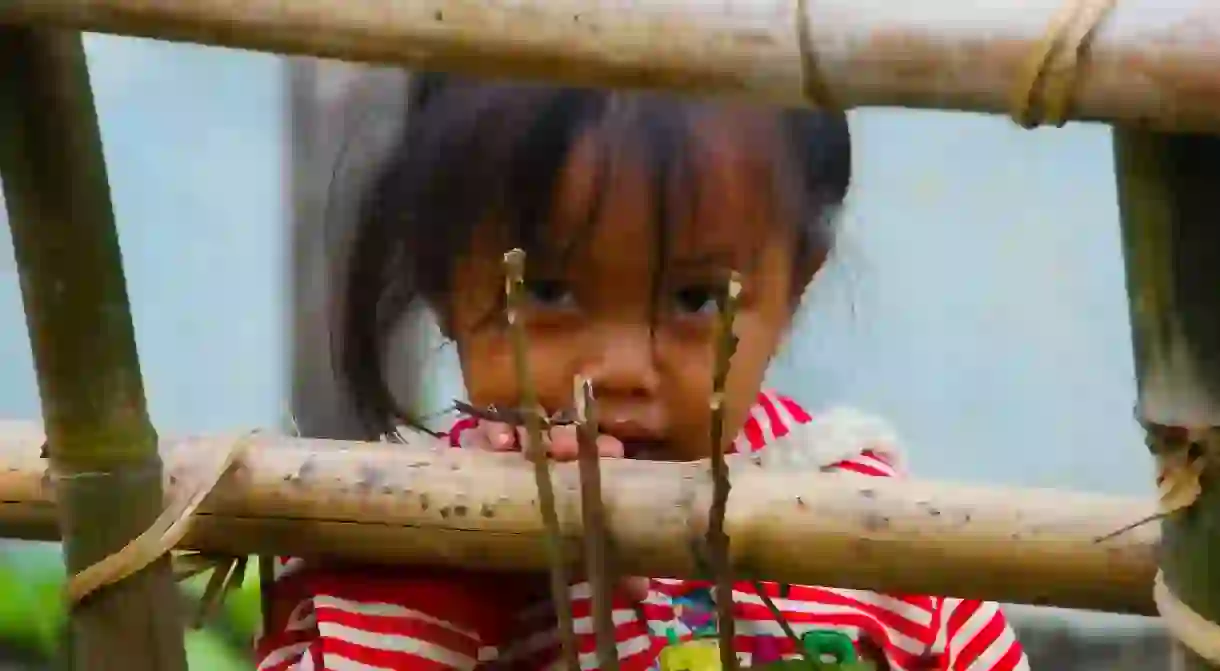How Orphanages in Cambodia Trick Travelers

With over 260 orphanages and 12,000 orphans in Cambodia, travelers around the world are flocking to this South East Asian country to volunteer, unaware they are fueling a sinister form of tourism: fake orphanages.
A quick look into volunteer opportunities in Cambodia reveals a photo parade of smiling global volunteers. A group of sun kissed 20-somethings stand kneeling beside skinny children in over-sized clothing at an orphanage in Siem Reap. Dreadlocked backpackers with handwoven wristbands sway in tune to the dance performances of orphans in Phnom Penh. Gap year travelers in faded, college t-shirts happily hold hands with toddlers at an orphanage outside Battambang.
Looking at the idyllic shots of Westerners extending a hand to children in need, it is easy to see where the discrepancy rests between what is perceived about orphanage volunteering and what is the reality. The compassion of visiting tourists is an incredible emotion and unfortunately one that is monetized in Cambodia where UNICEF reports only 28 percent of children in orphanages are in fact orphans. It’s a shocking statistic that causes pause. Why are children who are not orphans ending up in orphanages? How can orphanages possibly be on the rise in a country where the number of orphans has steadily decreased?

Up until the 1990s, Cambodia was wrapped up in a civil war that—once dissipated—gave way to a growing tourism boom bringing in over two million travelers a year. According to a report in AlJazeera, ” ‘Voluntourism’—the fastest-growing sector of one of the fastest-growing care industries in the world—is fueling a high-profit volunteering business that sees volunteers’ dreams exploited and Cambodian children separated from their families.”
Of the alleged orphans in Cambodia, at least 70 percent have at least one living parent. The reason these children are ending up in orphanages comes down to the simple age-old equation of supply and demand: there is a demand for volunteer opportunities from travelers, which is answered with the creation of fake orphanages that funnel children (who are not in fact orphans) in for the sake of making money.
Families from poorer, rural areas are manipulated into sending their children to these institutions where quality education, better living conditions and access to healthcare is often promised. Instead, the children are sent to fake orphanages where they grow up surrounded by strangers, are vulnerable to neglect, exploitation and even abuse.

When travelers donate money and time towards fake orphanages they are not helping orphans, they are creating them. Volunteering at these corrupt orphanages poses displaced children as an exhibit for travelers to spend time with. To avoid inadvertently supporting a fake orphanage, education is key.
According to Orphanages.no, an organization dedicated to spreading awareness of fake orphanages, “Any orphanage that will let you in off the street to volunteer for a day is NOT an orphanage you should be supporting. In other words, the answer to ‘which orphanage should I volunteer at today?’ is ‘none of them.’ ” Other ways to spot fake orphanages in Cambodia include: looking for long term volunteer opportunities versus short term ones, seeking orphanages with dedicated, full time staff members and avoiding orphanages that use a third party organization to place you within a volunteer program.
Rather than spend a week at an orphanage, volunteers visiting Cambodia are encouraged to explore ways to help the rural communities where children are being lured from. Whether it’s supporting educational programs, locals businesses or initiatives that fight to keep families together, it is better to pour time and money into fostering community programs instead.













